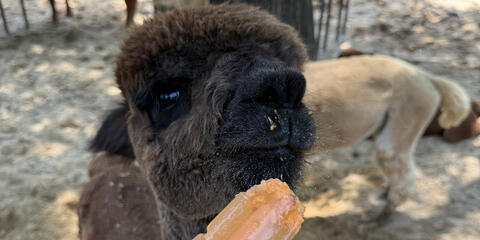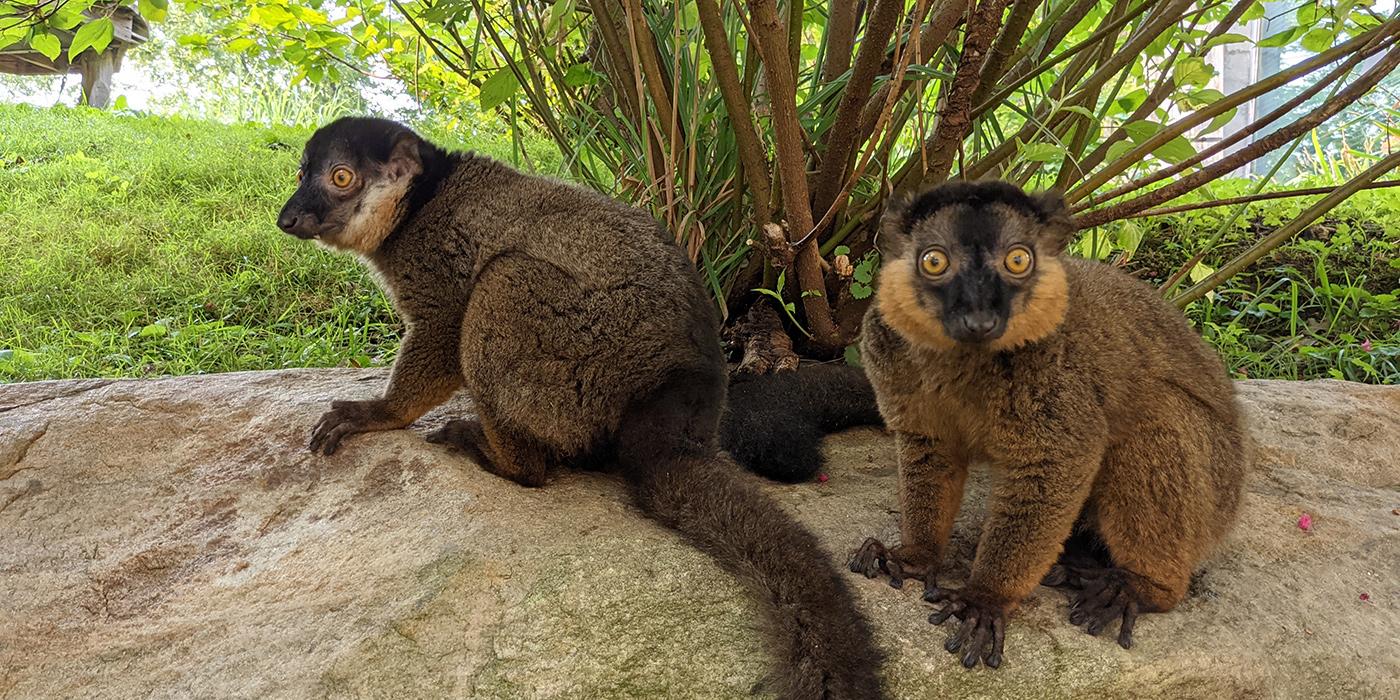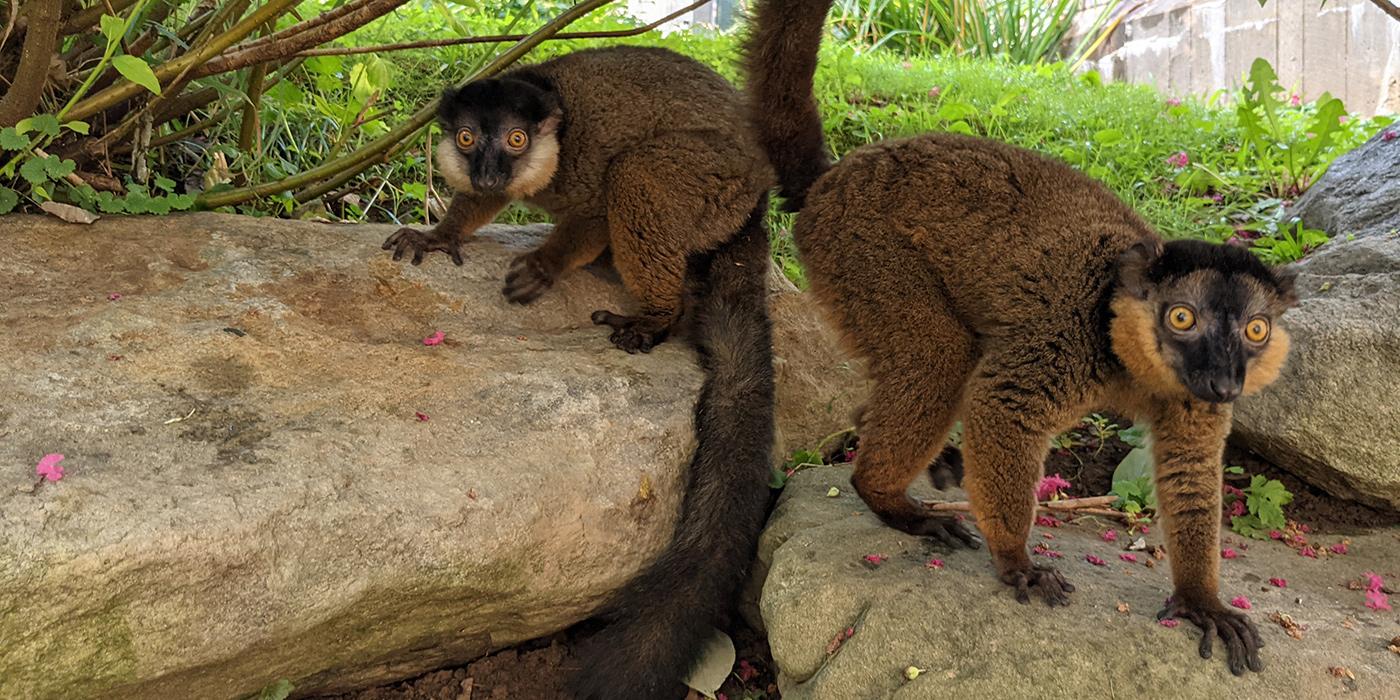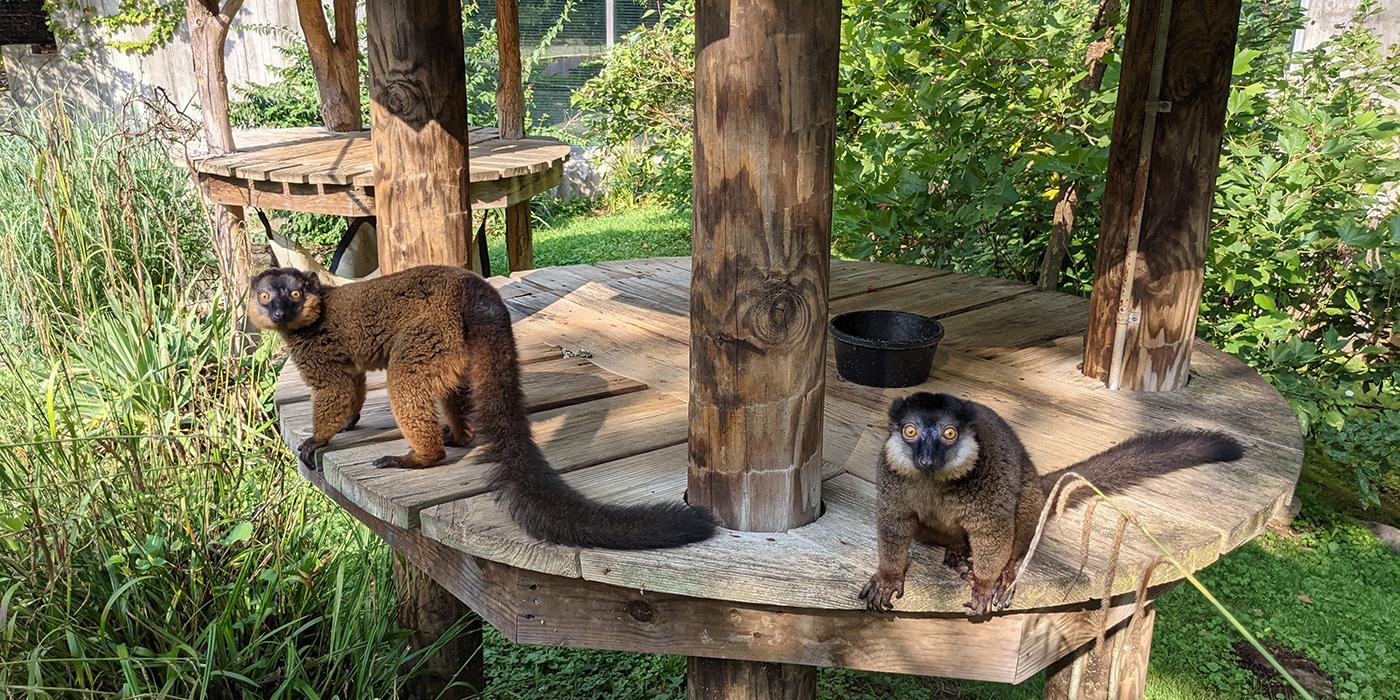Collared brown lemurs are found in southeastern Madagascar and are named for the collars of reddish-brown fur around their necks.
Physical Description
These medium-sized lemurs have brown coats, orange-red eyes and a ring of reddish-brown fur around their necks. They are sexually dichromatic, meaning that males and females have different coloration. Males have more gray in their coats, darker tails and a dark stripe along their spines. Their faces, muzzles and the top of their heads are also dark gray or black. Females have lighter gray fur on their heads and faces, as well as reddish-brown, less prominent cheeks.
Both sexes have “tooth combs” — tall, slender, lower teeth that tilt forward and are separated by narrow gaps — used for grooming. Collared brown lemurs are arboreal, meaning they spend most of their time in trees and rarely come down to the ground. Their tails are longer than their bodies, which helps them balance on branches in the forest canopy and leap long distances.
Size
They weigh about 5.5 pounds (2.6 kilograms), with an average body length of 16 inches (41 centimeters) and tails up to 22 inches (55 centimeters) long.
Native Habitat
Collared brown lemurs inhabit tropical moist lowland forests and montane forests in southeastern Madagascar. They live at elevations from sea level to 6,152 feet (1,875 meters) and are commonly found in the protected areas of Andohahela National Park and Midongy du Sud National Park.
Lifespan
Collared brown lemurs live 20-25 years in the wild. Their median life expectancy in human care is about 23 years, but they can live up to 36 years in human care.
Food/Eating Habits
Fruit makes up about 70% of their diet. They also eat flowers, nectar, bark, soil, insects and sometimes small chameleons. Their diet varies widely based on what food is available, and they have been documented eating more than 75 different plant species.
Collared brown lemurs are important seed dispersers in the forests where they live. They are relatively messy eaters, dropping seeds on the ground as they eat from fruit plants. They also travel throughout the day, distributing digested fruit seeds in their droppings as they move around the forest.
At the Smithsonian’s National Zoo, collared brown lemurs eat a variety of greens, vegetables, fruits, nuts and biscuits.
Sleep Habits
Collared brown lemurs are cathemeral, meaning they are active periodically during the day and night. They are relatively inactive most of the time and spend about two-thirds of the day resting. They feed and move about primarily in the early morning or late evening.
Social Structure
These lemurs live in moderately large groups, called troops, that range in size from two to 22 lemurs. Smaller troops are becoming more common as their forest habitat grows more fragmented. In most lemur species, females are dominant. However, collared brown lemurs are co-dominant, meaning there is no clear hierarchy within their troops.
Collared brown lemurs are very social and forage together high up in the forest canopy. They maintain the boundaries of their home ranges by vocalizing and scent marking. In general, they are not territorial, but they may have noisy or hostile encounters if they overlap with other groups.
Reproduction and Development
Collared brown lemurs become sexually mature at about 3 years old. In Madagascar, the breeding season occurs between May and July. In the Western Hemisphere, breeding can occur at different times of the year. Males are more aggressive during the breeding season and court females by urinating on them and scent marking more often.
Females are only sexually receptive for a 24-hour period during the breeding season. After about a 120-day gestation period, they typically give birth to one lemur, or occasionally twins. Both parents help raise the young, which may explain why collared brown lemurs have a lower infant mortality rate compared to other lemur species. The young lemurs begin to wean when they are 3 to 4 months old.
Conservation Efforts
Collared brown lemurs are classified as endangered by the International Union for Conservation of Nature's Red List, as of a 2018 assessment, and are listed on CITES Appendix I. CITES, the Convention on International Trade in Endangered Species of Wild Fauna and Flora, is an international agreement between governments that aims to ensure the trade of wild animals and plants does not threaten species survival.
Over the past 24 years, collared brown lemurs have experienced a population decline of more than 50%. Their greatest threat is habitat destruction due to slash-and-burn agriculture, the burning of hardwood trees to produce charcoal, and timber extraction. They are also at risk of being hunted for food as bushmeat and being captured for the illegal pet trade. Increased regulation, management and oversight to reduce illegal logging and hunting can help protect this species.
Collared brown lemurs are major seed dispersers in the forests of southeastern Madagascar. Their presence in the ecosystem is important for forest recovery efforts.
Help this Species
- Reduce, reuse and recycle — in that order! Cut back on single-use goods, and find creative ways to reuse products at the end of their life cycle. Choose recycling over trash when possible.
- Be a smart consumer. Choose products made with sustainable ingredients, such as Smithsonian certified Bird Friendly coffees, which support farmers striving to limit their impact on wildlife and habitat.
- Share the story of this animal with others. Simply raising awareness about this species can contribute to its overall protection.
Meet the Animals
Zoo visitors can see collared brown lemurs outside the Small Mammal House.
Animal News

Keeping the Farm Animals Cool with Frozen Treats





